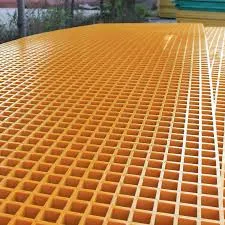
-
 Afrikaans
Afrikaans -
 Albanian
Albanian -
 Amharic
Amharic -
 Arabic
Arabic -
 Armenian
Armenian -
 Azerbaijani
Azerbaijani -
 Basque
Basque -
 Belarusian
Belarusian -
 Bengali
Bengali -
 Bosnian
Bosnian -
 Bulgarian
Bulgarian -
 Catalan
Catalan -
 Cebuano
Cebuano -
 China
China -
 China (Taiwan)
China (Taiwan) -
 Corsican
Corsican -
 Croatian
Croatian -
 Czech
Czech -
 Danish
Danish -
 Dutch
Dutch -
 English
English -
 Esperanto
Esperanto -
 Estonian
Estonian -
 Finnish
Finnish -
 French
French -
 Frisian
Frisian -
 Galician
Galician -
 Georgian
Georgian -
 German
German -
 Greek
Greek -
 Gujarati
Gujarati -
 Haitian Creole
Haitian Creole -
 hausa
hausa -
 hawaiian
hawaiian -
 Hebrew
Hebrew -
 Hindi
Hindi -
 Miao
Miao -
 Hungarian
Hungarian -
 Icelandic
Icelandic -
 igbo
igbo -
 Indonesian
Indonesian -
 irish
irish -
 Italian
Italian -
 Japanese
Japanese -
 Javanese
Javanese -
 Kannada
Kannada -
 kazakh
kazakh -
 Khmer
Khmer -
 Rwandese
Rwandese -
 Korean
Korean -
 Kurdish
Kurdish -
 Kyrgyz
Kyrgyz -
 Lao
Lao -
 Latin
Latin -
 Latvian
Latvian -
 Lithuanian
Lithuanian -
 Luxembourgish
Luxembourgish -
 Macedonian
Macedonian -
 Malgashi
Malgashi -
 Malay
Malay -
 Malayalam
Malayalam -
 Maltese
Maltese -
 Maori
Maori -
 Marathi
Marathi -
 Mongolian
Mongolian -
 Myanmar
Myanmar -
 Nepali
Nepali -
 Norwegian
Norwegian -
 Norwegian
Norwegian -
 Occitan
Occitan -
 Pashto
Pashto -
 Persian
Persian -
 Polish
Polish -
 Portuguese
Portuguese -
 Punjabi
Punjabi -
 Romanian
Romanian -
 Russian
Russian -
 Samoan
Samoan -
 Scottish Gaelic
Scottish Gaelic -
 Serbian
Serbian -
 Sesotho
Sesotho -
 Shona
Shona -
 Sindhi
Sindhi -
 Sinhala
Sinhala -
 Slovak
Slovak -
 Slovenian
Slovenian -
 Somali
Somali -
 Spanish
Spanish -
 Sundanese
Sundanese -
 Swahili
Swahili -
 Swedish
Swedish -
 Tagalog
Tagalog -
 Tajik
Tajik -
 Tamil
Tamil -
 Tatar
Tatar -
 Telugu
Telugu -
 Thai
Thai -
 Turkish
Turkish -
 Turkmen
Turkmen -
 Ukrainian
Ukrainian -
 Urdu
Urdu -
 Uighur
Uighur -
 Uzbek
Uzbek -
 Vietnamese
Vietnamese -
 Welsh
Welsh -
 Bantu
Bantu -
 Yiddish
Yiddish -
 Yoruba
Yoruba -
 Zulu
Zulu
Feb . 16, 2025 09:14
Back to list
fiberglass walkway grating
Fiberglass walkway grating, often referred to as FRP (Fiber Reinforced Plastic) grating, has become a pivotal component in industrial, commercial, and even residential projects across the globe. Its growing popularity is not without reason. FRP grating offers a plethora of benefits that surpass traditional materials like steel and wood, creating an ideal solution for various applications where durability, safety, and accessibility are paramount.
Beyond practicality, environmental considerations are becoming increasingly important. Fiberglass grating is eco-friendly, as it can be made from recycled materials and is fully recyclable at the end of its use. Its long life and reduced maintenance requirements also mean fewer replacements and less environmental impact over time. Businesses and organizations focusing on sustainability efforts find fiberglass grating to be an ally in minimizing their carbon footprint while ensuring durable infrastructure. Fiber Reinforced Plastic grating also promotes customization and adaptability. Manufacturers offer a range of colors, panel sizes, thicknesses, and mesh shapes to suit specific applications and aesthetic preferences. This versatility allows seamless integration into existing or new constructions, making it suitable for a wide variety of industries, from aerospace to agriculture. With custom fabrication options, architects and engineers can implement fiberglass grating into their designs without compromising on functionality or design integrity. In selecting fiberglass walkway grating, engaging with reputable manufacturers is crucial to ensure the quality and performance of the products. Top manufacturers adhere to stringent quality standards and provide certifications verifying the structural integrity and safety of their grating. Partnering with these industry leaders not only guarantees superior product performance but also enhances credibility through alignment with well-respected brands. Fiberglass walkway grating integrates durability, safety, and eco-friendliness with ease of use and cost efficiency, making it a compelling choice for a variety of applications. As technology advances and standards elevate, the potential uses and benefits of FRP grating continue to expand, paving the path for innovative solutions in modern infrastructure.


Beyond practicality, environmental considerations are becoming increasingly important. Fiberglass grating is eco-friendly, as it can be made from recycled materials and is fully recyclable at the end of its use. Its long life and reduced maintenance requirements also mean fewer replacements and less environmental impact over time. Businesses and organizations focusing on sustainability efforts find fiberglass grating to be an ally in minimizing their carbon footprint while ensuring durable infrastructure. Fiber Reinforced Plastic grating also promotes customization and adaptability. Manufacturers offer a range of colors, panel sizes, thicknesses, and mesh shapes to suit specific applications and aesthetic preferences. This versatility allows seamless integration into existing or new constructions, making it suitable for a wide variety of industries, from aerospace to agriculture. With custom fabrication options, architects and engineers can implement fiberglass grating into their designs without compromising on functionality or design integrity. In selecting fiberglass walkway grating, engaging with reputable manufacturers is crucial to ensure the quality and performance of the products. Top manufacturers adhere to stringent quality standards and provide certifications verifying the structural integrity and safety of their grating. Partnering with these industry leaders not only guarantees superior product performance but also enhances credibility through alignment with well-respected brands. Fiberglass walkway grating integrates durability, safety, and eco-friendliness with ease of use and cost efficiency, making it a compelling choice for a variety of applications. As technology advances and standards elevate, the potential uses and benefits of FRP grating continue to expand, paving the path for innovative solutions in modern infrastructure.
Next:
Related Products









